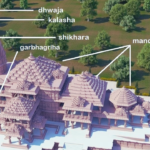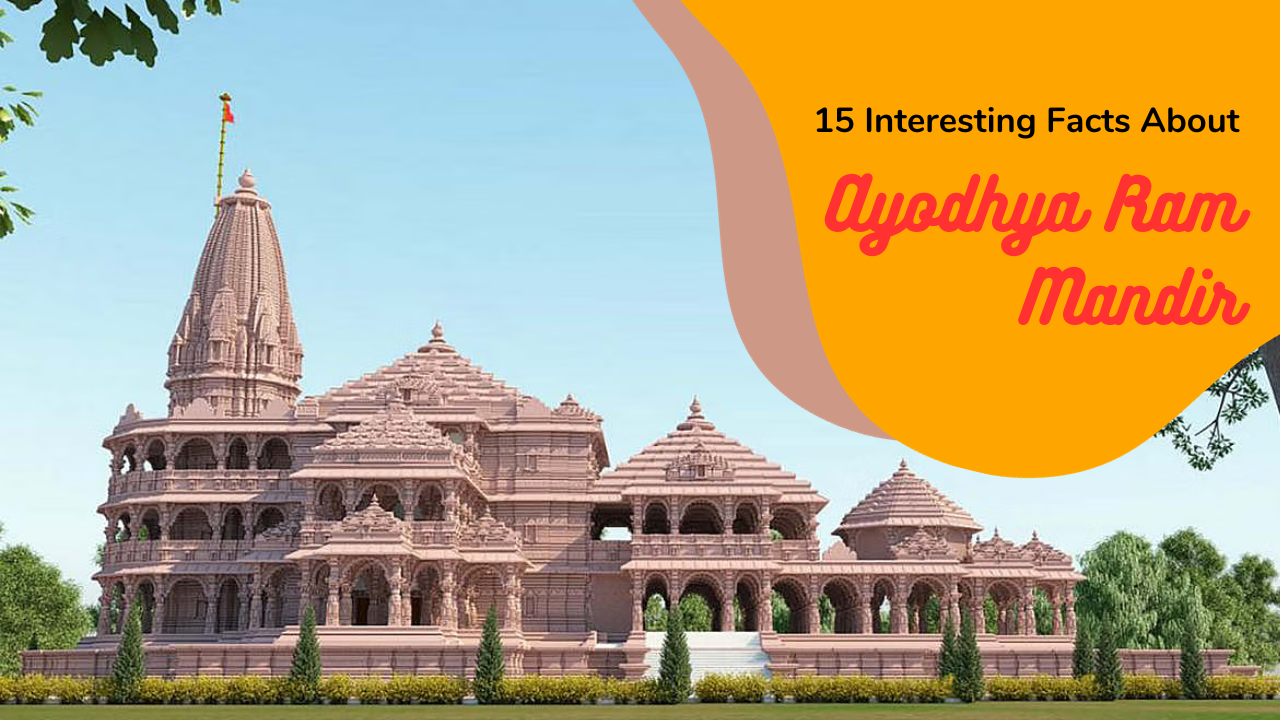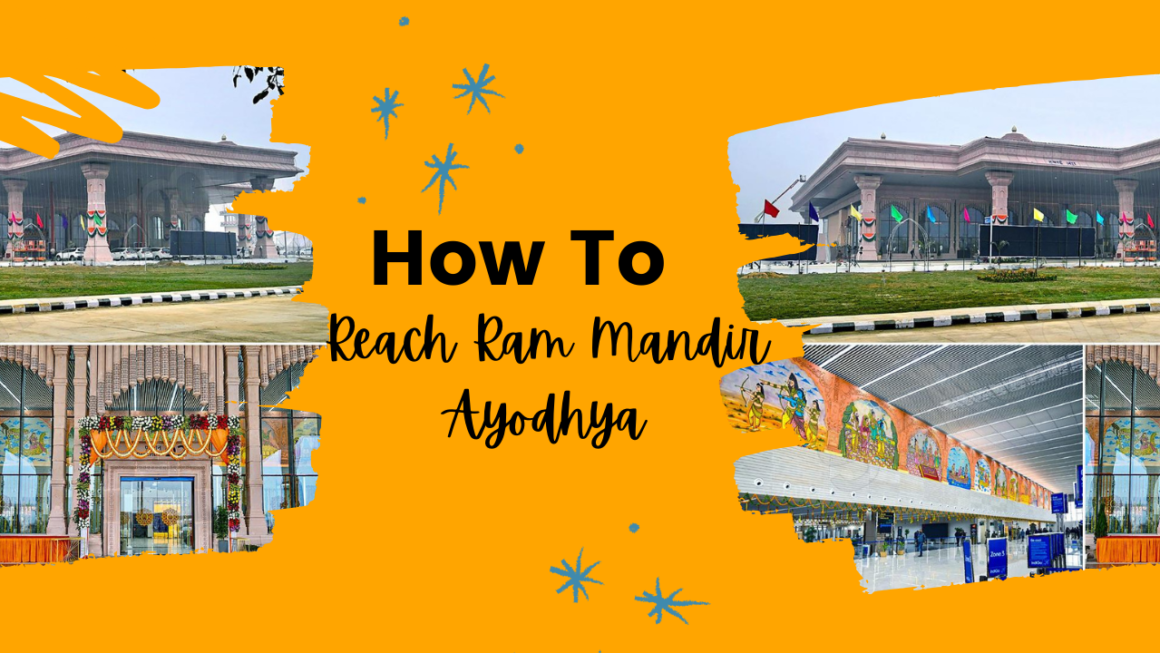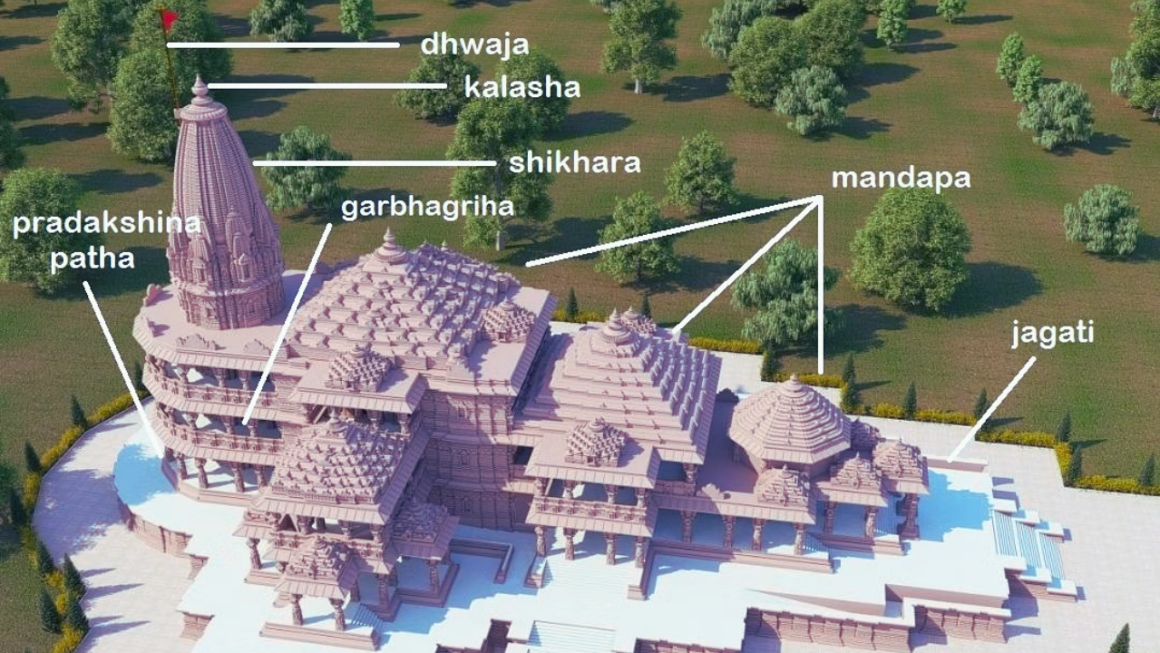Introduction to Ayodhya Ram Mandir Unique Attributes
The Ayodhya Ram Mandir, a profound symbol of faith and cultural heritage, is not just a marvel of architecture but a mosaic of spirituality, history, and artistry. Situated in the ancient city of Ayodhya, this monumental structure is more than a temple; it’s a testament to the enduring legacy of one of India’s most revered deities, Lord Ram. As the construction progresses, each aspect of the temple unfurls stories and facts that resonate deeply with millions, weaving a narrative that transcends the bounds of mere physical construction.
This temple, in its grandeur and sanctity, stands as a living embodiment of India’s rich cultural tapestry. It’s not just the scale of the project that captivates the imagination but the myriad of unique elements that make it an exceptional edifice. The temple’s foundation, for instance, is a confluence of holy soil and waters from across India, symbolizing national unity and spiritual interconnection. This aspect alone speaks volumes about the temple’s deep-rooted connection to the country’s diverse cultural and spiritual landscape.
The architectural prowess behind the Ayodhya Ram Mandir is another facet that demands admiration. The temple is a brainchild of the Sompura family, a lineage celebrated for their architectural expertise in temple design. Their vision brings together traditional Indian temple architecture and contemporary needs, creating a structure that is expected to stand the test of time, both in terms of durability and spiritual significance.
Furthermore, the temple is a harmonious blend of ancient wisdom and modern engineering. The decision to forgo steel and iron in construction, relying instead on stone, is a remarkable move that aligns with traditional Indian construction methods, aiming for longevity and historical authenticity. This approach not only honors ancient architectural practices but also ensures that the structure remains an enduring legacy for millennia.
Moreover, the Ayodhya Ram Mandir is not just about its physical structure; it’s about the stories, beliefs, and history it encapsulates. The temple narrates the life of Lord Ram, with each floor dedicated to different phases of his life, turning the temple into a living museum of mythological and cultural significance.
Here are 15 Interesting Facts About Ayodhya Ram Mandir You Must Know
1. Spiritual Significance of the Foundation The foundation of the Ayodhya Ram Mandir is infused with spiritual essence, incorporating holy soil from 2587 regions, symbolizing a unique tapestry of spiritual unity.
2. The Legacy of Sompura Architects The Sompura family, with a legacy in temple architecture, are the masterminds behind the Ram Mandir’s grandeur, continuing their ancestral tradition in temple design.
3. Unique Construction: A Millennium of Strength Eschewing conventional materials like steel and iron, the Ram Mandir’s construction relies on stones, ensuring structural integrity for over a thousand years.
4. The Symbolic Shri Ram Bricks Reflecting historical practices, the bricks used in the Ayodhya Ram Mandir are inscribed with ‘Shri Ram,’ mirroring the ancient method used in Ram Setu’s construction.
5. Adherence to Ancient Architectural Shastras The temple’s design meticulously follows Vastu Shastra and Shilpa Shastras, incorporating the Gujara-Chaulukya style, a testament to ancient architectural wisdom.
6. International Spiritual Contributions: Soil from Thailand Demonstrating global spiritual unity, soil from Thailand was incorporated in the temple’s consecration, emphasizing Lord Ram’s universal appeal.
7. Depicting Lord Rama’s Life The temple’s three floors, spanning 2.7 acres, artistically narrate Lord Ram’s life, with the first floor dedicated to his Darbaar, crafted in pink sandstone.
8. The Temple’s Numerical Dimensions Exploring the temple’s dimensions reveals its impressive scale: 360 feet in length, 235 feet in width, and a height of 161 feet, with three floors and 12 gates.
9. Integration of Sacred River Waters The consecration ceremony featured holy water from 150 Indian rivers, symbolizing the unity of India’s diverse sacred waters.
10. Support from Prominent Figures The Ayodhya Ram Mandir’s construction received substantial financial contributions from notable personalities, including politicians and spiritual leaders.
11. Preserving History: The Time Capsule A time capsule, buried 2000 feet below the temple, aims to preserve the temple’s history for future generations, containing information about Lord Ram and Ayodhya.
12. The Archaeological Puzzle Archaeological surveys suggest the Babri Mosque was built over a pre-existing structure, possibly from Lord Ram’s era, adding mystery to the site’s historical narrative.
13. Architectural Brilliance: Pillars and Design The temple’s 360 pillars, crafted in the Nagar style, and the use of Bansi Paharpur stone, enhance its aesthetic and architectural appeal.
14. Revitalizing Ayodhya Beyond the Ayodhya Ram Mandir, a comprehensive initiative aims to transform Ayodhya into a cultural and spiritual hub, with a budget of 500 Crores for development projects.
15. A Vision for the Future The temple, nearing 90% completion, is set to open in January 2024, representing a fusion of past and future aspirations.
Read Also: Architecture of Ram Mandir: A Journey Through History and Design
Conclusion: A Confluence of Faith, History, and Architecture
The Ayodhya Ram Mandir, in its essence, transcends the conventional definition of a religious edifice. It is a monumental tribute to faith, a canvas where history is painted with the strokes of architectural ingenuity, and a testament to India’s rich spiritual and cultural legacy. This temple is not just a structure of worship; it is a vibrant tapestry of stories, beliefs, and traditions that mirror the diverse yet unified ethos of India.
As the temple nears its completion, it emerges as more than a mere physical space for devotion. It is poised to become a center for cultural convergence, where the past and the present coalesce, offering a unique perspective on the journey of faith and civilization. The temple’s design, which intricately blends the grandeur of ancient Indian architecture with the nuances of modern construction, serves as a bridge between generations, connecting the rich history of Ayodhya with the aspirations of a new era.
The Ayodhya Ram Mandir also stands as an emblem of communal harmony and spiritual inclusivity. Its foundation, enriched with soil and water from various parts of India and even from international shores, symbolizes a universal spirit of unity and brotherhood. This aspect alone elevates the temple from a religious landmark to a symbol of global spiritual solidarity.
Moreover, the temple’s construction has sparked a renaissance in Ayodhya, promising to rejuvenate the town into a vibrant cultural hub. The ripple effect of its development is expected to extend beyond the temple, bringing economic growth, infrastructure development, and cultural revival to the region. This transformative impact underscores the temple’s role not just as a spiritual center but also as a catalyst for socio-economic development.
In conclusion, the Ayodhya Ram Mandir is set to redefine the landscape of religious and cultural significance in India. It is a beacon of hope, unity, and devotion, drawing people from all walks of life to experience its splendor. As it stands on the brink of completion, the temple is not just a monument of the past but a promise for the future, a place where stories of faith will continue to unfold, inspiring generations to come.













